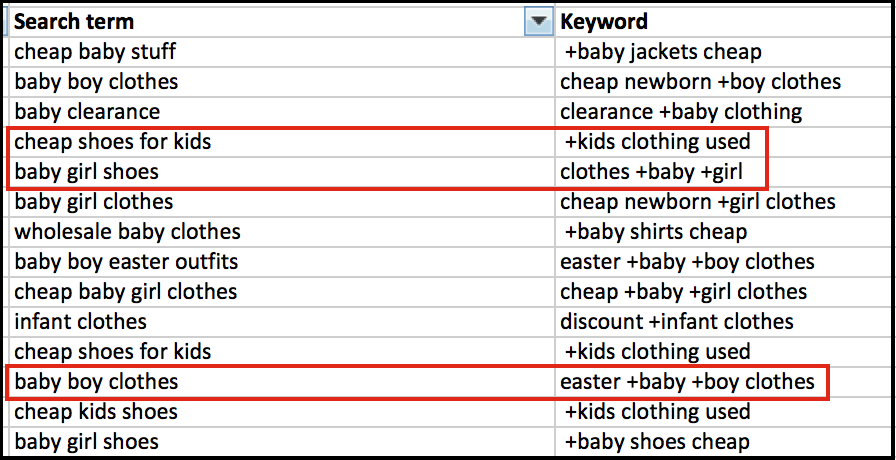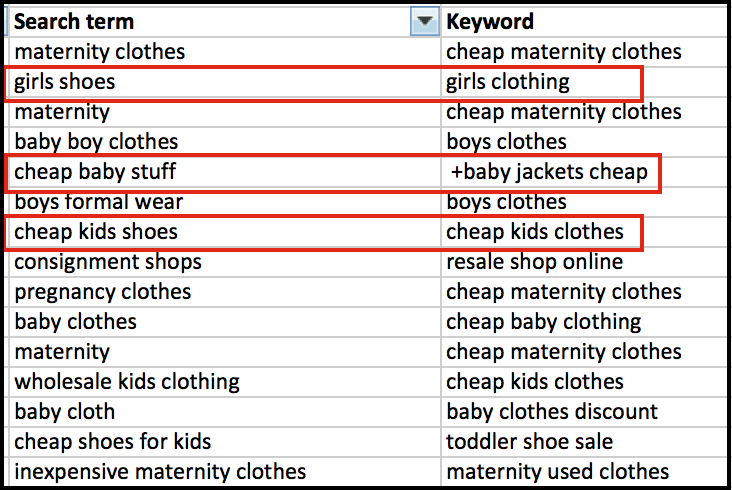As an Account Analyst, Account Managers usually come to me with some sort of problem. Sometimes it’s “I’d like to brainstorm strategy” and other times it’s “we need to improve ROAS as quickly as possible.” Not being the Account Manager gives me a fresh set of eyes on an account. I found in the past that when I was struggling with a problem on my own account, it was mainly because I spent too much time looking at it, and got bogged down with too many details.
Recently I was approached with a ROAS problem for one of our ecommerce accounts. It was a fairly new client, and our first priority was to get ROAS up.
Step 1: Goals, KPIs, and Other Need-To-Knows
Goals are imperative to have going into a review because you need to know what to focus on. If you go to the doctor for a headache, but don’t say what’s wrong, you might get treated for stomach issues. This leads to lots of unnecessary tests and wasted time, which nobody wants (especially the busy PPC professional). Here’s what I like to have before looking at a problem:
- The overall account goal(s) & KPIs
- A quick overview of the problem
- Note: don’t be too uber-specific about where you think I should look. I like to figure it out myself and not be swayed by you’re opinion
- Anything in particular the client really cares about
- If there are any recent big account changes that you’ve made (i.e., change in strategy)
Case Study
For this particular account, the ROAS goal was 1.05, and it had been around .82 for the last couple weeks. Here’s what the information given to me by the AM looked like:
- Overall account goal of 1.05 ROAS
- Account was recently restructured
- Top performing product types change frequently, as it mainly depends on what’s in stock (this client runs an online consignment store)
Step 2: Dig In!
Now comes the fun part (for me, anyway). I like to start at the top level, and work my way down. So I’ll first look at the campaign level and check out where the problem is, and then take a peek at settings. From there, I’ll start to drill down into the ad groups and see if I notice any trends in particular. I’ll think about what the issue is, and what potential causes are. For the ROAS example, this means inefficient spend in the account; so we look for places where we can cut unnecessary spend (and of course boost revenue where we can).
Case Study
When I started looking at the account, I noticed there were a lot of broad match keywords that only had the “+” modifier on one of the words, for example: “cheap baby +clothes.” After noticing this trend, I decided to look at overall match type performance, as well as pull a search query report.
First, I looked at keywords with the “+” modifier:
Then, I looked at regular broad match keywords:
As you can see, search terms weren’t exactly matching up to the most relevant keywords. This is important, because someone searching for “girls shoes” is seeing an ad for “girls clothing”. This creates a disconnect between messaging and landing pages, which could cause users to immediately bounce off of your site without making a purchase.
Step 3: What Does It Mean? Giving Context
Charts, graphs, and raw data don’t mean much without some context. It’s only when you can take raw data, organize it in a way that makes sense, and then apply your knowledge to it that it is useful. You can think of this principal as a knowledge pyramid, shown below:
After digging into an account and downloading all of the relevant data, you need to put it in a format that’s easily digestible. This is where pivot tables, graphs, and charts come into play. I like to include blurbs next to the data, providing some actual analysis that tells the reader directly what the data means, and what should be done about it.
Case Study
Along with the screenshots from the SQR shown above, I pulled a pivot table to show overall match type performance.
The key takeaways here are that there is quite a bit of wasted spend coming from broad keywords. While these keywords garner a fair amount of revenue, they also spend quite a bit. From what we learned from the search queries, the recommendation was made to adjust broad keywords that had a low return on ad spend.
Step 4: Implementation And Next Steps
Once findings and recommendations are given, the next step is to implement whatever changes you think will remedy the issue(s). This step is pretty straightforward, and will be different for every account.
Case Study
In this account, all broad match keywords with ROAS below 80% were changed to modified broad (or the additional “+” that were missing were added). Broad keywords that had a ROAS of above 80% were added to the account as exact match.
Step 5: Give It Some Time And Then Review Results
Depending on the scope of the changes you’re making, you may want to wait a week or two before reevaluating the successfulness of your changes. I like to go in the AdWords interface and use the “Compare to” feature to review KPIs before and after the implementation stage.
While phrase keywords dropped off a bit, we see improvements in both broad and exact match.
You can now think about longer-term strategy. In this particular case, the next step was to grow overall revenue now that ROAS was at a reasonable level. Once again I looked for any areas of opportunity in the account. By providing a fresh set of eyes on the account, we were able to come up with a growth plan for the next few months. New ideas included:
- Dayparting
- Ad rotation settings
- Campaign delivery settings
- Sitelinks & Callout extensions
- Shopping campaign optimizations
- ROAS bidding strategies
Final Thoughts
If you’ve been struggling with a problem on one of your accounts, I strongly encourage you to ask someone else to do a quick audit of the account. Someone who isn’t intimately familiar with every detail of the account and client can provide some good insight and new ideas.
If you happen to be the person auditing the account, having a systematic way of going through the account and providing insights/feedback can go a long way too. Not only does having a plan increase efficiency, it also provides some focus so you can provide great feedback that is easily understood and implemented.
Lastly, make sure you are checking back in after you’ve made some changes in the account to see whether or not it actually helped. This makes for great learning experiences that you can share with others who might be having the same issue.
What are your thoughts? How do you like to go about auditing an account?









